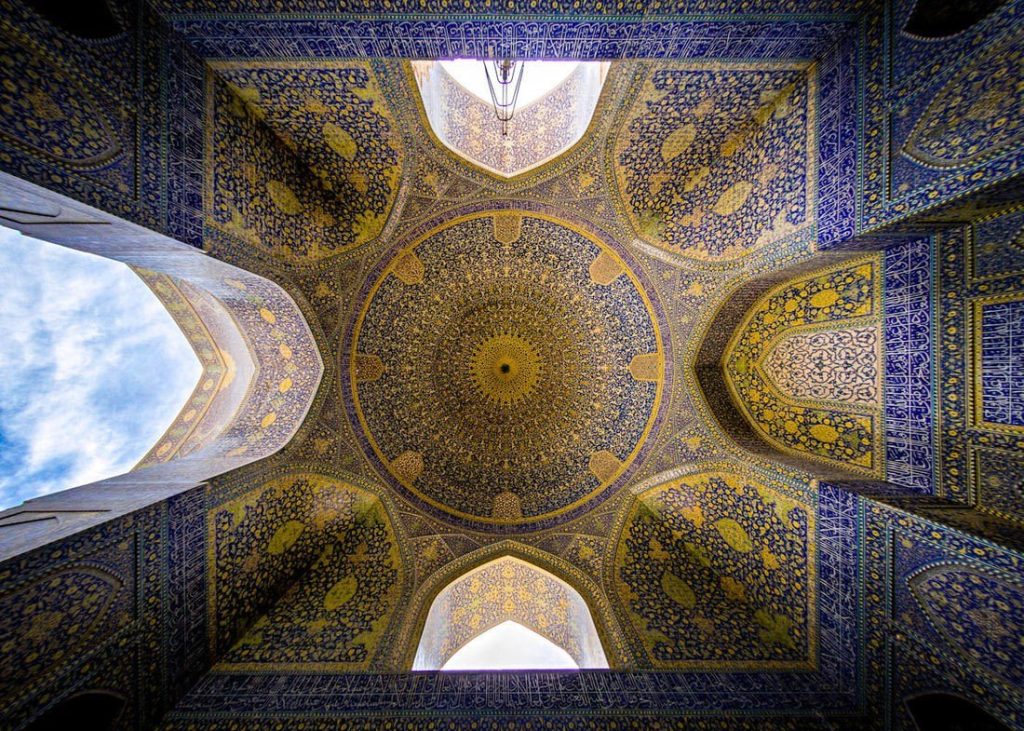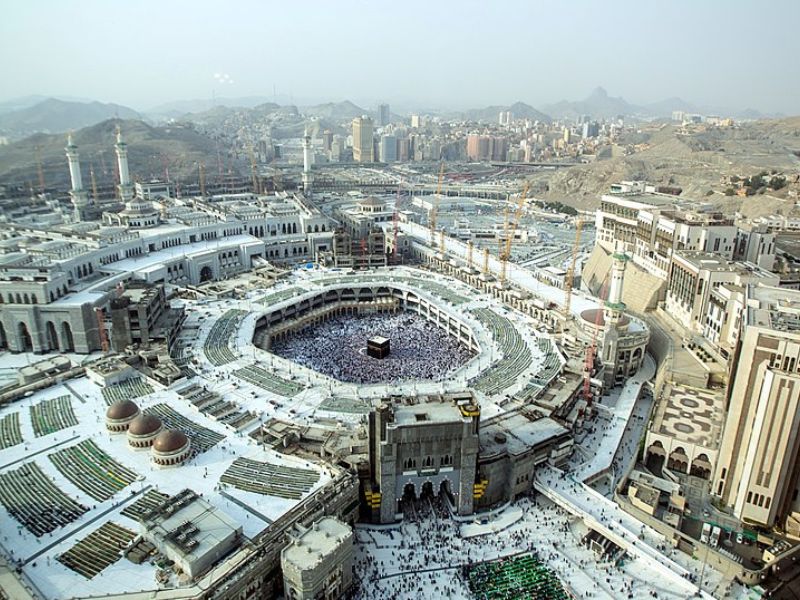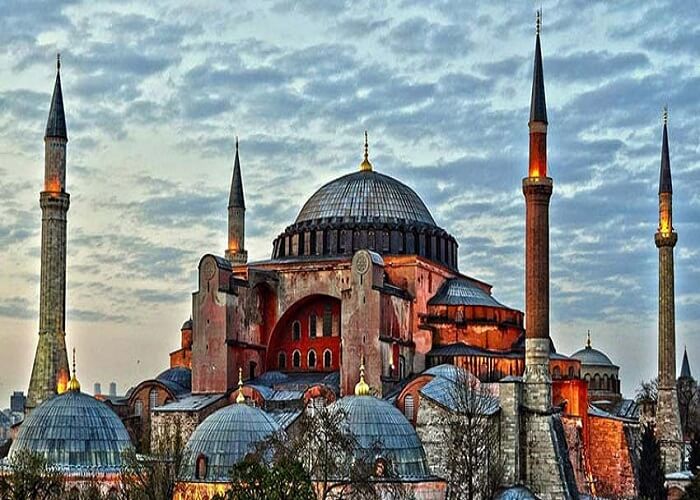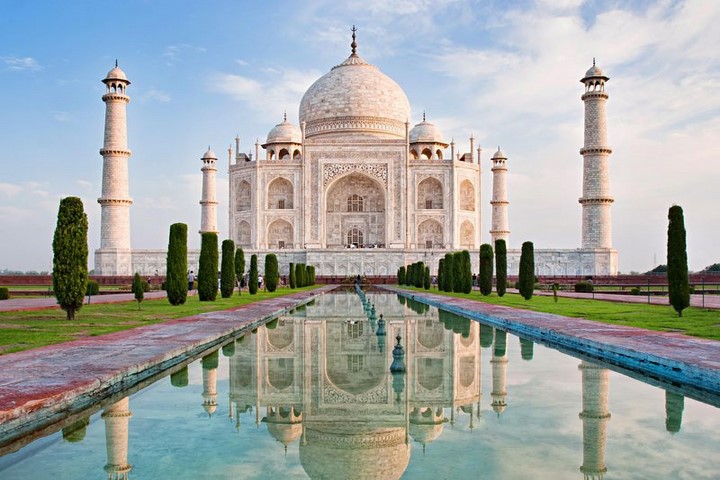In classical architecture, you see Islamic architecture. Islamic architecture is an expressive language that expresses the rich culture and civilization of Islam. This style of architecture, with an age of more than 14 centuries, has displayed the glory and spirituality of Islam throughout history, with full elegance and beauty. From magnificent mosques and royal tombs to luxurious palaces and public buildings, every work of Islamic architecture depicts a story of creativity, innovation and faith. It is as if every brick and tile, every arch and vault, and every minaret and dome whisper a song of monotheism and love. In this article, we will go on a journey in the wonderful world of Islamic architecture and get to know the different angles of this magnificent art. From what it is and its features to history and famous examples, we will take a step towards a deeper understanding of this valuable heritage.
What is Islamic architecture?
But islamic architecture is a collection of construction styles and methods that have been formed in Muslim societies under the influence of Islamic teachings. This style of architecture, beyond a mere construction concept, is a philosophy of life and a manifestation of Islamic identity and culture. But we know that in general, the originality of this architectural style goes back to the land of Arabia and the religion of Islam in the past centuries. But due to the spread of Islam in many countries around the world, including Iran, this style was also combined with the architectural styles of those lands to witness the development and expansion of the Islamic architectural style. The introduction of this architect style does not end here. So stay with us to introduce this style and its features and history more and more in the next sections.

History of Islamic architecture
Throughout history, Islamic architecture has traveled a path full of ups and downs. But this style of architecture was formed during the early days of Islam, inspired by the architecture of Rome, Byzantium and Iran. In the following periods, with the spread of Islam, we saw the diversity and emergence of different styles of Islamic architecture in different regions. This case showed itself more and more especially in the 7th and 8th centuries to the extent that that period can be considered the glory of Islamic architecture. In Islamic architecture, the ossification of the building is the most important part and the decoration and finishing of the building surfaces is considered its most attractive element. But in general, Islamic architecture has been influenced by two architectural styles. Roman-Greek style as well as oriental architectural style. Oriental architecture means Iranian and Mesopotamian architecture.
Principles and characteristics of Islamic architecture
In this architectural style, paying attention to the function of the space and the spiritual needs of man is a priority. Mosques, as the beating heart of Muslim communities, with their special design, provide a spiritual and relaxing atmosphere for worship and prayer.
Symmetry and order are the most prominent features of this architectural style. This order and coherence, while creating visual beauty, inspires a sense of balance and peace to the audience.
Geometric and slime motifs, as decorative elements, play an essential role in this architectural style. These motifs, which are derived from deep Islamic concepts, give unique beauty and elegance to the buildings.
Light is a vital element in Islamic architecture. The use of natural light, especially in the design of mosques, creates a spiritual atmosphere.
Muslim architects used local materials suitable for the climate of each region in the construction of buildings. This, in addition to preserving the local identity, also contributed to the stability and strength of the buildings.
The role of Islamic architecture in Iran
But you know that Iranian architecture is one of the flagships of classical architecture. If we look at the history of Iranian architecture, we will notice the existence of extraordinary buildings. But you should know that Islamic architecture in Iran has a long and brilliant history. Throughout history, this noble art has been mixed with the creativity and innovation of Iranians and has led to the creation of unique works. From magnificent mosques and royal tombs to luxurious palaces and public buildings, every work of Islamic architecture in Iran depicts the greatness and glory of Iranian-Islamic civilization. Even today, many villa houses that are built, besides using modern and minimal style, also use Islamic style. But this is exactly the combination of the beauty of Iranian-Islamic architecture.
But there are many roles of this architectural style in Iran. Let’s check some of them.
Identity: Islamic architecture has played an essential role in giving identity to the land of Iran. Magnificent buildings such as Isfahan Jame Mosque, Sheikh Lotfollah Mosque and Naqsh Jahan Square are a symbol of Islamic-Iranian culture and civilization.
Social cohesion: This style of architecture helped social cohesion and interactions between people by creating public spaces such as mosques, schools and markets.
Scientific development: Scientific and educational centers such as Baytul-Hikmeh and Nizamieh School, which were built with the inspiration of this architectural style, played a significant role in the flourishing of science and knowledge in Iran.
Showing creativity: Iranian architects, using their creativity and innovation, created unique masterpieces in Islamic architecture. But the use of geometry, light and color in Iranian buildings is proof of this creativity and innovation.
Economic development: the boom in the construction of religious, public and residential buildings in different Islamic periods helped economic development and job creation in Iran.
10 masterpieces in Islamic architecture
Al Haram Mosque (Mecca, Saudi Arabia)
The first masterpiece of Islamic architecture is the holiest place of worship for all Muslims in the world. Al-Haram Mosque, the holiest place in Islam, with an area of more than 350,000 square meters, is the largest mosque in the world. This mosque, with the Holy Kaaba at its center, is the Qibla of Muslims around the world. The huge dome and the tall minarets of the Grand Mosque are among the most significant elements of Islamic architecture.


Al-Nabi Mosque (Madinah, Saudi Arabia)
But masjid al-Nabi, the second holiest mosque in Islam, is the burial place of the Holy Prophet (PBUH). This mosque, with its magnificent architecture and spiritual atmosphere, welcomes millions of pilgrims from all over the world every year. The green dome of Al-Nabi Mosque is one of the most beautiful domes in the Islamic world. Nowadays, during the trip that Muslims have to the city of Medina in Saudi Arabia, they pay a lot of attention to visiting and worshiping in this mosque.
Hagia Sophia Mosque (Istanbul, Türkiye)
Hagia Sophia, originally built as a church, was converted into a mosque after the Muslim conquest of Constantinople. This mosque, with its unique architecture and huge dome, is one of the most famous historical buildings in the world. The wall paintings and mosaics of the Hagia Sophia mosque are among the artistic masterpieces of the Byzantine era. This work has become one of the most visited tourist attractions in Turkey.


Isfahan Jame Mosque (Iran)
But now it’s time to review one of the most popular historical mosques in Iran. Isfahan Grand Mosque, with an age of more than 1000 years, is one of the most important historical buildings in Iran and the Islamic world. This mosque, with four long porches and a lofty dome, is a masterpiece of Iranian-Islamic architecture. Isfahan Jame Mosque is registered in the UNESCO World Heritage List. If you travel to Isfahan, you must visit this building and get lost in its beauty.
Taj Mahal (Agra, India)
But let’s examine one of the most beautiful and attractive buildings in the world. Built as the mausoleum of Mumtaz Mahal, the wife of Mughal emperor Shah Jahan, the Taj Mahal is one of the most famous monuments in the world and a symbol of love and beauty. This building, with a combination of Iranian, Indian and Islamic architecture, with a white dome and tall minarets, is considered a unique architectural masterpiece.


Alhambra Palace (Granada, Spain)
The Alhambra, a complex of palaces, gardens and fortifications, built during the Muslim rule in Spain, is one of the most beautiful Islamic architectural monuments in the world. This complex, with its elegant architecture and eye-catching decorations, is a reminder of the splendor of Islamic civilization in Spain.
Sheikh Lotfollah Mosque (Isfahan, Iran)
Sheikh Lotfollah Mosque, which is also known as Darb Imam Mosque, is one of the most beautiful mosques in Iran and the world. This mosque is a masterpiece of Iranian-Islamic art, with its elegant architecture and decorative tiling and moqrans. Sheikh Lotfollah Mosque is registered in the UNESCO World Heritage List.


Sultan Ahmed Mosque (Istanbul, Türkiye)
But the Sultan Ahmed Mosque, also known as the Blue Mosque, is one of the most famous mosques in the world. This mosque, with its six tall minarets and numerous domes, and blue tile decorations, is a symbol of Islamic architecture in the Ottoman era. Today, this work has become one of the spiritual tourism attractions in Turkey.
Minaret and Blue Mosque (Tabriz, Iran)
The blue minaret and mosque, which was built during the rule of the Ilkhani, is one of the most beautiful historical buildings in Iran. This building is considered a masterpiece of Azerbaijani art with its mosaic tile decorations and turquoise dome. Nowadays, many people visit this attractive building when they visit the beautiful city of Tabriz.


Nasir al-Mulk Mosque (Shiraz, Iran)
But if we look at the tiling and lighting in this building, we will realize that Nasir al-Mulk Mosque in Shiraz is one of the most precious masterpieces of art in Iran and Islamic architecture. Even the psychology of color, which was used in choosing the color of different parts of this mosque, shows the art of the architects who designed and implemented this fascinating work. This mosque is one of the most visited works in Shiraz.
Thank you for joining us in this article. As you have seen, in this article we have thoroughly investigated the style of Islamic architecture and introduced you to its details. Islamic architecture, as a valuable heritage, plays an essential role in Iranian culture and civilization. This noble art, with its unique beauty and spirituality, has always inspired artists and architects. Preserving and reviving this precious heritage is everyone’s duty so that we can pass this pure gem to future generations. We hope that the information presented in this article was useful for you. But Ohaddeco collection specializes in the field of decoration design. You can contact us through communication bridges to get more information and start cooperation with Ohaddeco Group.





6 Responses
I was extremely pleased too find this site. I want to to thank you for your time just for
this fantastic read!! I definitely loved every littrle bit
off it and I have yoou bookmarked to look at new things in your blog. https://ukrain-forum.Biz.ua/
I was extremely pleased tto find this site. I want to to thank you foor your time just for this fantastic read!!
I definitely lloved every little bit of it and I have you
bookmarked too look at new things in your blog. https://ukrain-forum.Biz.ua/
Thank you for your cooperation.
I really love your website.. Pleasant colors & theme.
Did you build this site yourself? Please reply back as I’m looking tto
create my owwn personal blog and would love to know where you got this from orr just what the theme is
called. Kudos! https://ukrain-forum.biz.ua/
I really love your website.. Pleasant colors & theme.
Did you bjild this site yourself? Please reply back as I’m looking to create my own personal
blog and would love to know whete you got this from
or just what the theme is called. Kudos! https://ukrain-forum.biz.ua/
Hello my friend
This site is designed personally